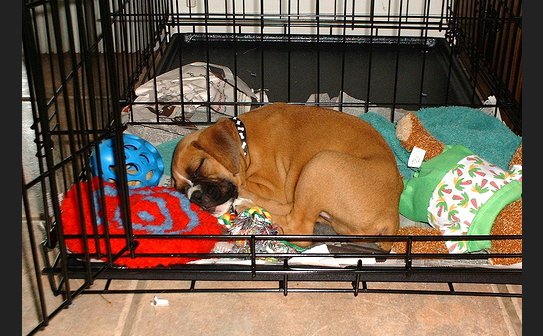With many families still working from home and the kids still out of school, it’s important to consider changes in routine and interrupted rest time that may affect dog behaviour.
Most family dogs are used to having a fairly consistent daily routine. They get breakfast and a quick morning walk, they see the family off, then they rest or sleep until the dog walker comes for their outing or their humans come home for the after-work walk. Generally, trainers will discourage militant schedules to avoid potential anxiety over sudden schedule changes[i] but loose routines and predictability within a reasonable framework help dogs feel confident and safe.

COVID-19 has significantly changed that dynamic, and some dogs – particularly senior dogs or dogs entering an adolescent fear period – experience anxiety and irritability from a lack of rest and sudden change in routine[ii]. Most dog owners are not adept at reading dog body language, so if a dog’s communication cues aren’t heeded, they may be shocked when their dog growls or snaps at a family member out of the blue. We also must consider how life going back to normal routines might affect dogs suddenly left alone all day again, and take measures to prevent future isolation distress.
School’s Out And Everybody is Working From Home
First, let’s look at potential stressors for family dogs when the entire family is suddenly home all day. On one hand, it’s wonderful that so many are taking the time at home to engage their pets in new forms of enrichment and training. But too much of a good thing, especially when kids are involved, can lead to overstimulation or irritability. This is when that out of the blue growl or snap can occur, causing a sudden and upsetting rift in the human/animal bond.

We understand that most well-socialized dogs adapt quite well to new situations. However, even behaviourally healthy dogs can become irritable if they are constantly engaged, or expected to play all day with the kids when normally they would be sleeping. It makes sense that this will increase stress and potentially lead to growling, snapping or biting. Giving the dog a well-deserved break from playtime with the kids by defining a “safe zone” such as a quiet, gated-off room or a well-conditioned crate where no one in the family is permitted to bother the dog will alleviate trigger stacking that could lead to aggression. Another upside to rest time during the day is a decrease in over-arousal or attention-seeking behaviour while you are trying to work.
All family members should also take time to learn about body language cues that might indicate that the dog is looking for space. Signals such as yawning, head turns, whale eye, ears lowered and back, out-of-context panting or leg lifts can indicate discomfort and stress. The ladder of aggression is a great tool to help recognize signs of stress and impending trouble.
Transitioning From Constant Companion To Alone At Home
It is also very important to ensure that dogs don’t experience isolation distress when life gets back to normal. With the current normal meaning little alone time for dogs, many trainers are coaching clients to be sure they set their dog up for success when everyone goes back to work and school. Preventative solutions during COVID-19 quarantine will go a long way toward eliminating potential isolation distress in future. Families currently working from home should:
- Ensure meal-time, walk-time, bed-time and wake-up time follow a similar schedule to pre-COVID-19
- Provide dogs with quiet spaces and alone time while the rest of the family is working
- Carry out departures without the dog daily, but at different times on different days and for varying lengths of time
- Schedule enrichment or training activities in a way that is sustainable for when things go back to normal.
Conclusion
For most of us, more time spent with our pets is a silver lining to an otherwise distressing time. With a few preventative measures, we can ensure that our pets remain calm and unstressed while we are at home and transition easily back into normal routines when we all go back to work and school. The team of certified trainers at the Toronto Humane Society is happy to help pet owners through behavioural consultations or training and enrichment solutions both during and after COVID-19 self isolation. For information on the services we provide, please visit https://www.torontohumanesociety.com/what-we-do/virtual-training.
Blog post by Beverley McKee ACDBC, CPDT-KA, Toronto Humane Society
[i]http://www.vetstreet.com/our-pet-experts/is-it-important-to-keep-my-dog-on-a-schedule
[ii] Overall, Karen (Elsevier Mosby 2013). Manual of Clinical Behavioral Medicine for Dogs and Cats, p.100.
